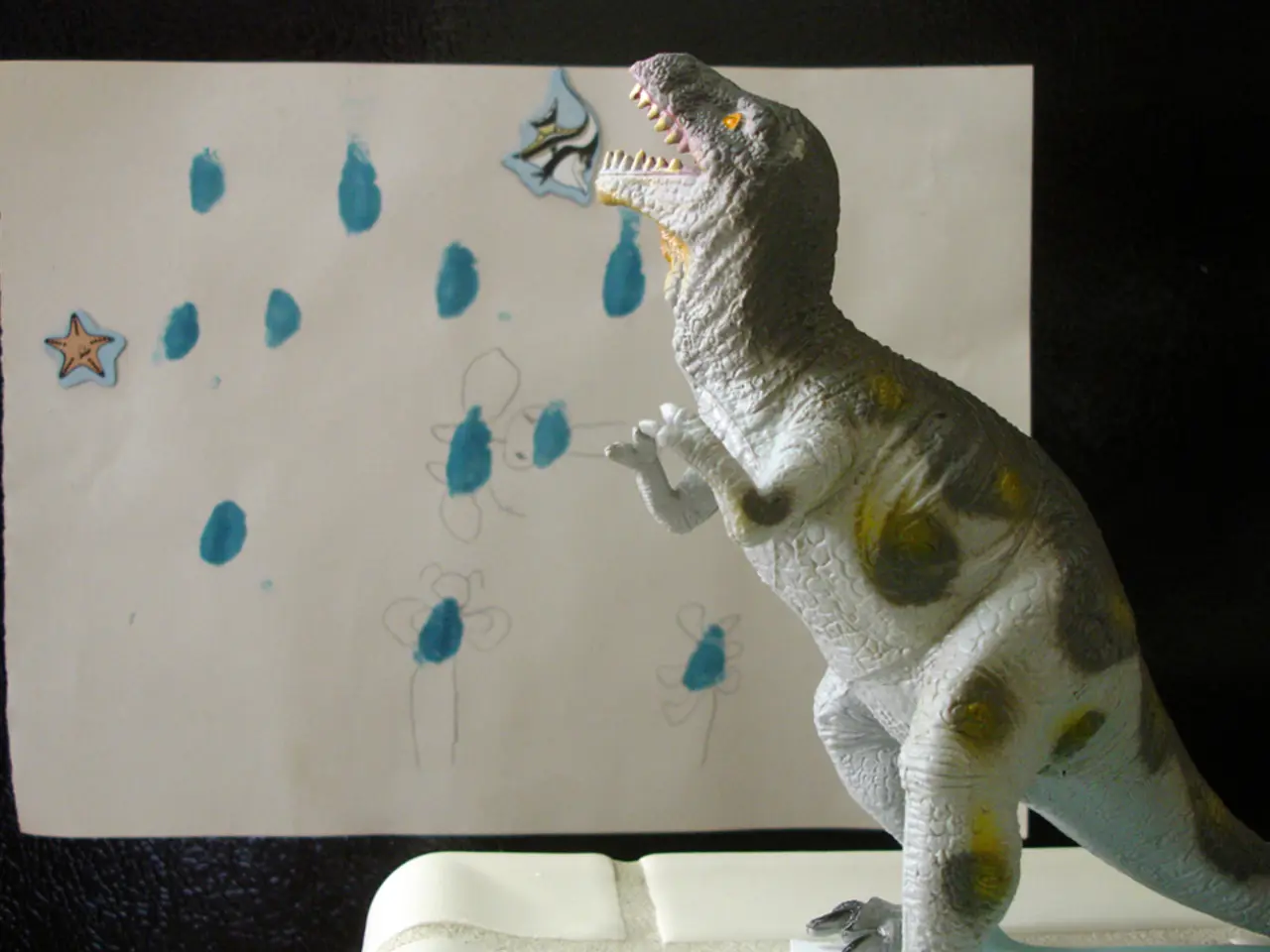Sauropod Dietary Habits and Migration Patterns Unveiled through the Study of Fossil Teeth
New Study Reveals Secrets of Sauropod Dinosaurs' Lives 150 Million Years Ago
A groundbreaking study published in the journal Nature Ecology and Evolution on July 18, 2025, has shed light on the lives of sauropod dinosaurs, revealing their feeding behavior, migration patterns, and environmental conditions during the Late Jurassic period.
The research, conducted as part of a cooperation between the Free University of Berlin, the Christian-Albrechts-University of Kiel, the University of NOVA Lisbon, and the Leibniz Institute for the Analysis of Biodiversity Change (LIB), used Dental Microwear Texture Analysis (DMTA) to examine 322 high-resolution 3D scans of teeth from 39 individual sauropods across three fossil sites: the Lourinhã Formation (Portugal), the Morrison Formation (USA), and the Tendaguru Formation (Tanzania).
According to the study, these microscopic wear marks reflect the types of vegetation the sauropods consumed in the days or weeks before death, thus allowing researchers to reconstruct their diets and habitats.
Key findings include:
- Feeding behavior: The microwear patterns indicate variation in diet among sauropods, revealing that they browsed on different plant types and likely had diverse feeding strategies adapted to their environments. For instance, Camarasaurus from Portugal and the USA showed consistent wear patterns, suggesting seasonal feeding behavior and potential seasonal migration. Flagellicaudatan sauropods like Diplodocus exhibited highly variable wear patterns, suggesting changing food sources and a generalist feeding behavior.
- Migration and habitat conditions: Differences in microwear textures between geographic sites suggest sauropods occupied varied ecosystems with distinct vegetation, implying migratory behaviors or habitat preferences influenced by local environmental conditions. Titanosauriforms from Tanzania showed strong and complex wear patterns, likely due to quartz sand-contaminated food in the semi-arid Tendaguru Formation environment.
- Ecological signals: The detailed dental wear analysis gives insight into the ecological dynamics of Late Jurassic sauropod faunas, contributing to understanding how these giant herbivores interacted with their environment and developed gigantism by exploiting diverse food sources.
Overall, DMTA applied to sauropod teeth represents a powerful tool that reveals behavioral and ecological aspects of extinct animals by decoding microscopic tooth wear patterns, shedding light on how sauropods fed, moved, and adapted to their environments millions of years ago.
The study, led by Emanuel Tschopp from the LIB, a member of the Leibniz Association, emphasizes the importance of interdisciplinary cooperation in gaining insights into past worlds. Daniela Winkler, another researcher involved in the study, states that each new sample gives them another puzzle piece, and their understanding of the past is improving as their tools do. The researchers plan to investigate the diet of sauropod juveniles and the adaptation of small-bodied species like Europasaurus in future analyses.
The Leibniz Association, a group that currently unites 96 research institutions from various disciplines, supports this research and the publication of the study marks not an end but a beginning for the involved researchers, as they plan further analyses.
- The exploration of environmental conditions during the Late Jurassic period, as revealed by the study, could provide valuable insights for modern areas of science such as environmental-science and climate-change research.
- The findings of this study on sauropod dinosaurs' feeding behavior and migration patterns resonate with the field of health-and-wellness and fitness-and-exercise, as understanding ancient animal habits can provide perspectives on our own evolutionary history and dietary requirements.
- The study's application of Dental Microwear Texture Analysis (DMTA) has potential implications in the realm of space-and-astronomy, as similar methods could be utilized for the examination of fossilized teeth from extraterrestrial environments, expanding our knowledge of life beyond Earth.




